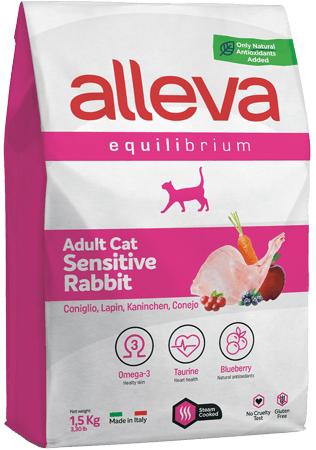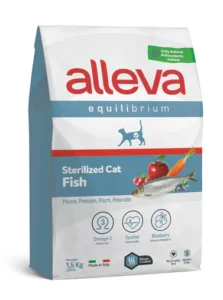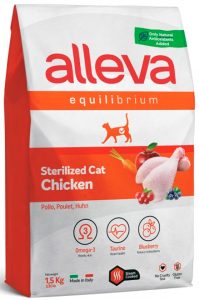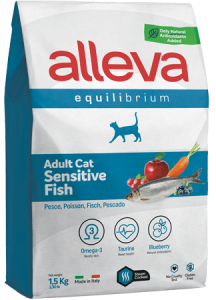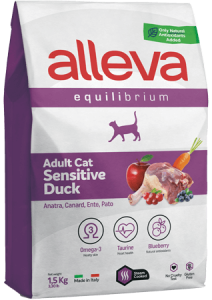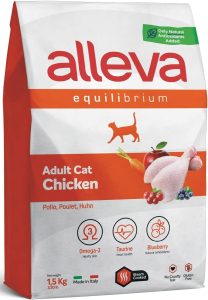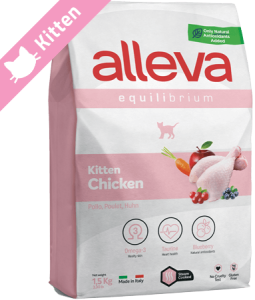Alleva Equilibrium
Adult Sensitive Rabbit
Adult
Sensitive
Indoor and Outdoor
Click to reveal the score breakdown
Tap to view ingredients, guaranteed analysis and more
Ingredients
Rabbit (of which 80% dehydrated and 20% fresh),
35%
Rice
Corn
Chicken fat
Dehydrated fish (herring)
10%
Pea starch
Hydrolyzed animal proteins
Fish oil (herring)
Pea fiber
Chicory root (source of inulin and FOS)
and also:
Dried inactivated brewers’ yeast (source of MOS),, Dried fruits and vegetables, Blueberry (0.4%), Cranberry (0.4%), Apple (0.2%), Carrot (0.2%), Calcium carbonate, Yucca juice.
Guaranteed Analysis
Crude Protein
33%
Crude Fat
15%
Crude Fiber
2.5%
Moisture
7%
Crude Ash
7.9%
Calcium
1.4%
Phosphorus
1%
Magnesium
0.06%
Omega 3
0.4%
Omega 6
1.3%
Metabolizable Energy
3845 kcal/kg
Product last updated: April 23, 2023, 8:38 AM
Please hold on while we’re getting the best offers for you
7333
